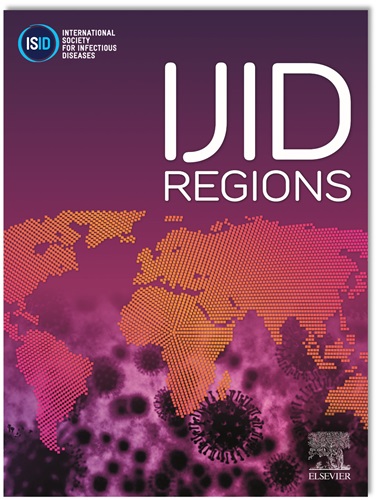The current landscape in antibiotic access and supply issues: a qualitative study with key experts and opinion leaders
IF 4.8
2区 医学
Q1 INFECTIOUS DISEASES
引用次数: 0
Abstract
Introduction
There is an increasing lack of access to safe and effective antibiotics for human consumption. We investigated the main drivers for current antibiotic shortages and existing mitigation strategies undertaken in different regions.
Methods
Purposive sampling was used to identify stakeholders with expertise in antibiotic access and supply chains. Consented participants were interviewed using a piloted semi-structured interview guide that was developed using the PESTELI (political, economic, sociological, ecological, technological, legal, industry) framework. Analysis and data collection are iterative and recursive, using constant comparison. Theoretical sampling is being applied to develop categories until saturation is reached.
Results
Between August 2023 and March 2024, 14 key stakeholders with local, national, and global roles in supply chain management (South Africa-7, UK-2, Sweden- 2, Netherlands-1, Belgium-1, USA-1) were interviewed. Political engagement on antibiotic shortages is reported to facilitate effective mitigation strategies, especially in areas where there is strong evidence of government investment. Political support manifests as legal measures for example in the EU and UK in supporting the response to shortages, giving rights to pharmacists to intervene through protocolized measures to use alternative agents, and negotiating with pharmaceutical companies for greater transparency on the challenges in manufacturing. Economic incentives are required at all levels and are currently missing. There is increasing monopolization of active pharmaceutical ingredients and raw materials in the pharmaceutical industry with a lack of information, partly due to technological insufficiency to gather appropriate data at scale across sectors for example on procurement in the community, for key antibiotics at high risk of being impacted by shortages. Sociological impacts and drivers of shortages include adopting appropriate communication to not cause panic buying and hoarding by organisations when there is an impending shortage and recognising the important role of a multidisciplinary response. The key stakeholders identified for developing mitigation strategies included pharmaceutical manufacturers, policymakers and regulators, and global organisations such as WHO. Mitigation strategies included moving stock between pharmacies, pharmacists being assigned to monitor antibiotic supply and shortages at the hospital level, and implementation of serious shortage protocols in the UK which enable pharmacists to dispense alternate antibiotics in case of shortages.
Discussion
There is a need for improved communications regarding shortages from the suppliers and transparency about potential problems in the supply chain. We were not able to interview actors from the pharmaceutical industry due to their restrictions which was a limitation since they play a key role in effective and sustainable antibiotic supply chains.
Conclusion
Having an understanding of the various factors contributing to antibiotic shortages will support developing mitigation strategies, and tools for forecasting shortages and their optimised management thereby assuring equitable access to antibiotics and mitigating the emergence and spread of antibiotic resistance globally.
抗生素获取和供应问题的现状:与主要专家和意见领袖的定性研究
越来越缺乏安全有效的抗生素供人类食用。我们调查了当前抗生素短缺的主要驱动因素以及不同地区采取的现有缓解策略。方法采用阳性抽样来确定在抗生素获取和供应链方面具有专业知识的利益相关者。同意的参与者使用使用pestei(政治、经济、社会、生态、技术、法律、工业)框架开发的试点半结构化访谈指南进行访谈。分析和数据收集是迭代和递归的,使用恒定的比较。理论抽样正在应用于开发类别,直到达到饱和。在2023年8月至2024年3月期间,采访了14名在供应链管理中扮演地方、国家和全球角色的关键利益相关者(南非-7人,英国-2人,瑞典-2人,荷兰-1人,比利时-1人,美国-1人)。据报告,在抗生素短缺问题上的政治参与促进了有效的缓解战略,特别是在有充分证据表明政府投资的领域。政治支持表现为法律措施,例如在欧盟和英国,支持应对短缺,赋予药剂师通过协议措施使用替代药物进行干预的权利,并与制药公司谈判,以提高生产挑战的透明度。各级都需要经济奖励,但目前缺乏这种奖励。在缺乏信息的情况下,制药行业的活性药物成分和原材料的垄断日益加剧,部分原因是技术上的不足,无法大规模收集跨部门的适当数据,例如社区采购方面的数据,以及受到短缺影响的高风险关键抗生素的数据。社会学影响和短缺的驱动因素包括采取适当的沟通,以避免在即将出现短缺时引起组织的恐慌性购买和囤积,并认识到多学科反应的重要作用。确定用于制定缓解战略的主要利益攸关方包括制药商、决策者和监管机构以及世卫组织等全球组织。缓解战略包括在药店之间转移库存,指派药剂师监测医院一级的抗生素供应和短缺情况,以及在联合王国执行严重短缺议定书,使药剂师能够在短缺情况下分发替代抗生素。关于供应商的短缺和供应链中潜在问题的透明度,有必要改进沟通。由于制药行业的限制,我们无法采访他们,这是一个限制,因为他们在有效和可持续的抗生素供应链中发挥着关键作用。了解导致抗生素短缺的各种因素将有助于制定缓解战略和预测短缺及其优化管理的工具,从而确保公平获得抗生素并减轻抗生素耐药性在全球的出现和传播。
本文章由计算机程序翻译,如有差异,请以英文原文为准。
求助全文
约1分钟内获得全文
求助全文
来源期刊
CiteScore
18.90
自引率
2.40%
发文量
1020
审稿时长
30 days
期刊介绍:
International Journal of Infectious Diseases (IJID)
Publisher: International Society for Infectious Diseases
Publication Frequency: Monthly
Type: Peer-reviewed, Open Access
Scope:
Publishes original clinical and laboratory-based research.
Reports clinical trials, reviews, and some case reports.
Focuses on epidemiology, clinical diagnosis, treatment, and control of infectious diseases.
Emphasizes diseases common in under-resourced countries.

 求助内容:
求助内容: 应助结果提醒方式:
应助结果提醒方式:


